Selecting the perfect BBQ pork tenderloin involves balancing texture, flavor, and size. Marination enhances taste and texture, while fresh herbs add complexity without overpowering. Creating your own BBQ sauce allows customization for sweet, tangy, smoky, or savory preferences. Grilling imparts a smoky char, while roasting ensures even doneness. Plating with rosemary, thyme, mashed potatoes, or roasted vegetables elevates the presentation. Store tenderloins in an airtight container up to 3-4 days and reheat using low-temperature methods for optimal quality.
“Indulge in a mouthwatering BBQ pork tenderloin recipe that combines the juiciest cut of meat with the freshness of herbs. This guide takes you on a culinary journey, from selecting the perfect pork tenderloin to mastering marinating techniques and choosing the ideal herbs. Learn the science behind infusing flavors, create your own BBQ sauce, and discover the best cooking techniques for maximum taste. We’ll also provide presentation tips and storage advice to ensure your succulent dish remains a highlight.”
- Selecting the Perfect Pork Tenderloin: Tips for Choosing the Best Cut
- Marinating Magic: The Science Behind Infusing Flavors
- Herbs 101: Which Fresh Herbs Pair Best with Pork?
- Building Your BBQ Sauce: A Recipe for Success
- Cooking Techniques: Grilling vs. Roasting for Maximum Flavor
- Presentation and Serving Suggestions: Elevating Your Dish
- Storage and Reheating: Keeping Your Pork Tenderloin Delicious
Selecting the Perfect Pork Tenderloin: Tips for Choosing the Best Cut
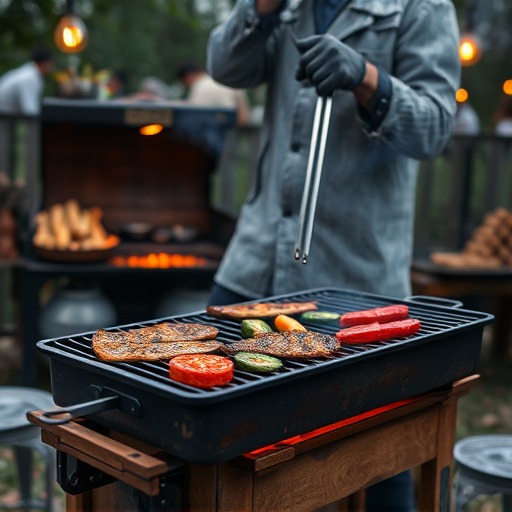
When it comes to sourcing the perfect cut for your BBQ pork tenderloin recipe, there are a few key factors to consider. Look for a tenderloin with a good marbling of fat – this not only ensures juicy, flavorful meat but also helps to keep it moist during cooking. Choose a loin that is firm and smooth, avoiding any signs of bruising or discoloration. The ideal size for a BBQ tenderloin is around 1-1.5 pounds; this allows for even cooking and plenty of delicious leftovers.
Consider where the tenderloin comes from – heritage breeds or locally sourced pork often offer superior flavor and quality. Ask your butcher for recommendations, as they can guide you towards the best options based on their expertise and seasonal availability. Remember, selecting the right cut is half the battle won in creating a mouthwatering BBQ pork tenderloin recipe that will impress your guests.
Marinating Magic: The Science Behind Infusing Flavors
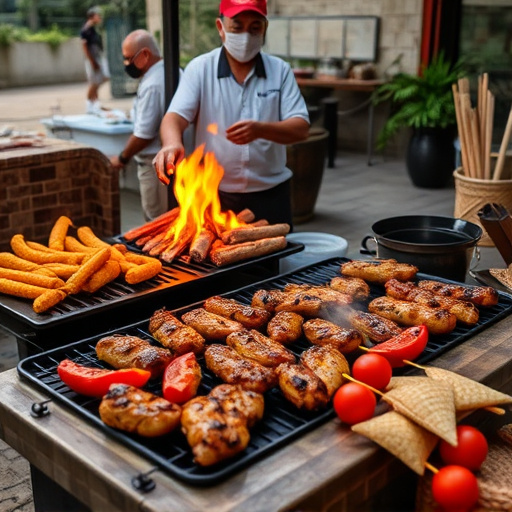
Marinating Magic: The Science Behind Infusing Flavors
Marinating is an art that transforms simple ingredients into mouthwatering delights. In the case of BBQ pork tenderloin recipe, marination acts as a gateway to unlocking the meat’s true flavor potential. The process involves submerging the pork in a flavorful liquid mixture, allowing the proteins and oils from the herbs and spices to penetrate the tenderloin’s surface. This penetration is where the ‘magic’ happens—the flavors meld and intensify, creating a complex and tantalizing taste experience.
The science behind it lies in osmosis, where the salt and acid components of the marinade draw out moisture from the meat, softening it and enhancing its overall texture. As time passes, the tenderloin absorbs these flavors, resulting in a succulent, well-seasoned BBQ pork tenderloin ready to impress at any gathering. It’s a simple yet powerful technique that takes an already delicious cut of meat to new heights.
Herbs 101: Which Fresh Herbs Pair Best with Pork?

Fresh herbs are a game-changer for any meat dish, and when it comes to BBQ pork tenderloin recipes, they can elevate your meal to new heights. The key is understanding which herbs complement pork’s rich, savory flavor without overpowering it. Popular choices include rosemary and thyme, both of which have earthy undertones that beautifully enhance the natural taste of the tenderloin. Parsley adds a bright, slightly citrusy note, while basil provides a gentle herbal twist.
When pairing herbs with pork, consider their flavors and aromas. Herbs like oregano and sage can be too intense for pork; instead, opt for milder varieties or use them sparingly as a finishing touch. Freshly chopped herbs not only enhance the flavor but also add a vibrant color and texture to your dish, making it both visually appealing and delicious. For a mouthwatering BBQ pork tenderloin recipe, these fresh herb choices will ensure your meal is nothing short of exceptional.
Building Your BBQ Sauce: A Recipe for Success
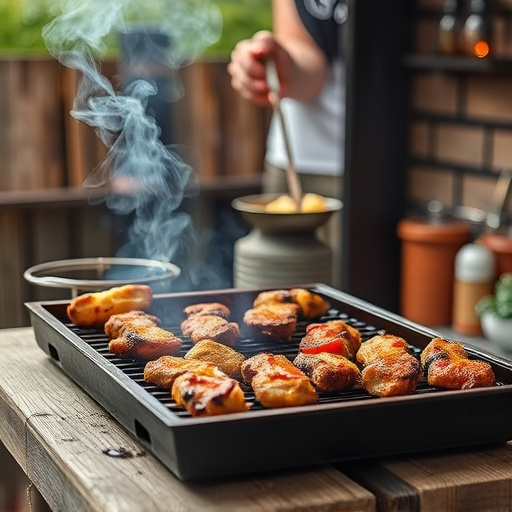
Creating your own BBQ sauce for grilled pork tenderloin can elevate the dish to a whole new level. It allows you to customize the flavor profile according to your taste preferences, whether it’s a sweet and tangy balance or a smoky, savory kick. A great BBQ sauce is a combination of simple ingredients that come together to create a complex, delicious flavor. Start with a base of ketchup, brown sugar, vinegar, and a touch of garlic powder and paprika for a foundational sweetness and warmth. Then, add in your choice of herbs – fresh thyme or rosemary can lend an earthy, aromatic note – and possibly some crushed red pepper flakes for heat.
For a successful BBQ pork tenderloin recipe, the sauce needs to be balanced. Too much sugar can overpower the meat’s natural flavor, while too much spice might burn the palate. The key is to simmer the sauce until it thickens slightly, ensuring that all the flavors meld together beautifully. Once you’ve perfected your sauce, it becomes a versatile partner for grilled pork tenderloin, enhancing every bite and making it an unforgettable culinary experience.
Cooking Techniques: Grilling vs. Roasting for Maximum Flavor

When it comes to cooking succulent pork tenderloin, grilling and roasting are two techniques that can dramatically impact the dish’s flavor. For a bbq pork tenderloin recipe, grilling allows direct heat to sear the surface, locking in juices and creating a deliciously charred exterior while keeping the interior tender and moist. This method is ideal for enhancing the natural flavors of the herbs and spices used, resulting in a mouthwatering, smoky taste.
On the other hand, roasting, often done in an oven, provides a more even cook, ensuring the pork reaches its perfect medium-rare doneness throughout. This technique allows for a slower infusion of flavors from herbs and marinades, creating a richer, deeper taste profile. Both methods have their merits, so whether you choose to grill or roast your pork tenderloin depends on your preferred texture, flavor intensity, and the equipment at your disposal—a simple swap that can elevate your bbq pork tenderloin recipe to new heights.
Presentation and Serving Suggestions: Elevating Your Dish
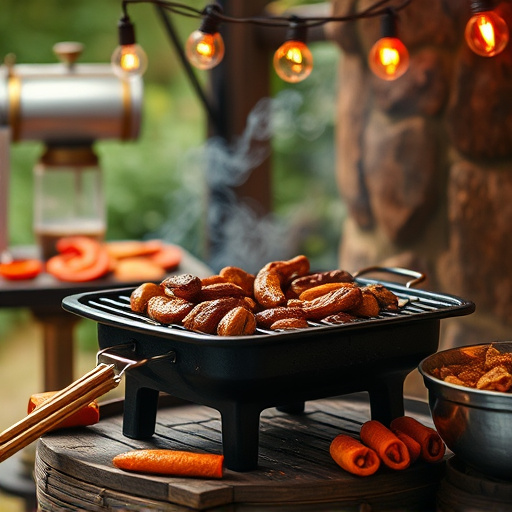
When presenting your succulent BBQ pork tenderloin, consider a simple yet effective plating style to let the flavors speak for themselves. Place the perfectly cooked tenderloin in the center of a plate, garnished with a sprig of fresh rosemary and thyme – these herbs not only add a burst of aroma but also enhance the overall visual appeal. A side of creamy mashed potatoes or roasted vegetables can complement the dish, offering a balanced combination of textures and flavors.
For an extra touch, drizzle some pan juices over the pork to keep it moist and add a rich, savory note. You could also include a small salad with a light vinaigrette to refresh the palate between bites. This approach ensures your BBQ pork tenderloin recipe is not only delicious but also artfully presented, making it a memorable dining experience for your guests.
Storage and Reheating: Keeping Your Pork Tenderloin Delicious
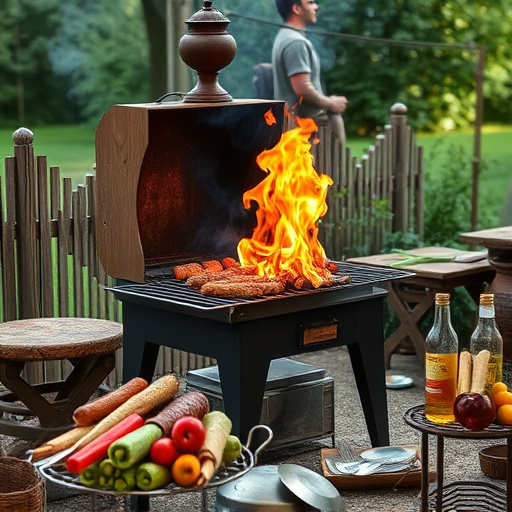
After cooking your succulent BBQ pork tenderloin, proper storage and reheating techniques are essential to maintain its deliciousness. Store leftover pork tenderloin in an airtight container in the refrigerator for up to 3-4 days. This helps prevent drying out and keeps the flavors fresh. When ready to reheat, it’s best to do so gently in a low-temperature oven or on the stovetop with a lid to retain moisture. Avoid microwave heating, as it can cause the meat to become tough and dry.
For those planning to enjoy the pork tenderloin over several days, consider portioning it out after cooking. This allows you to take out only what you need, ensuring each reheated serving retains its tender texture and mouthwatering herb-infused flavor.
